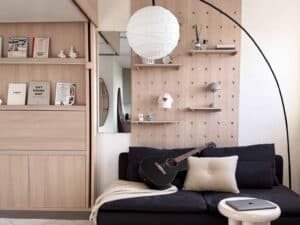There’s always that pang of loneliness when people live in a big city. You come home, heat the leftover food for dinner and longingly watch it inside the microwave. You’re used to this: living amidst millions, yet feeling profoundly alienated.
But what if you can rewrite the story? What if a community-oriented living space is tucked away in a corner, waiting to be discovered behind lonely people sitting on benches? Cities may have a way of making solitary lives, but human connection is within reach, if you know where to look.
This is where community living comes into play. This housing alternative redefines what it’s like to live in cities and build intentional communities. It puts shared spaces right into urban living. Better locations, social interactions, privacy—you get all the good stuff.
Let’s dive right into it!
Getting Started: What Does Community Living Mean?
Community living involves a group of people who live together based mostly on having shared demographics, interests and beliefs. While some people share everything under one roof (think communes), others live near each other and lend a hand whenever needed. Like long-time, good neighbours, and not a single person is left out.
In a nutshell, it requires active participation. It’s not just about proximity. You create a rich, meaningful living situation with those around you and learn how to connect on a deeper level. There is also a sense of belongingness that goes beyond just living together.
Housing trends are constantly changing, but community living is here to stay. With almost seven billion people moving to cities in 2050, shared spaces will become more in demand, potentially playing a crucial role in the evolving dynamics of urban community living.
But when did community living exactly begin? Pinpointing its origins can be pretty challenging, as the concept itself differs from one culture to another. However, there are traces of early evidence throughout history that humans have always formed communities in various ways.
Take a look at the history of community living to understand its roots:
Community Living: Its History
Ancient Communal Living
According to Karl Marx and Friedrich Engels, community living has been the norm from the very start of human life. These historians saw hunter-gatherer societies as prime examples of this, with their shared resources and lack of social hierarchy.
They lived in caves and simple shelters, but they worked together to hunt, gather food and raise their children.
Community Living in The Middle Ages

Community living was popular in Medieval Europe. Houses typically hosted a revolving cast of family, friends and townspeople, reflecting a more fluid arrangement than a modern nuclear family. At this point in history, single-family households were fairly uncommon as historian John Gillis claimed.
Everyone in the house, including helpers, sat down to eat together. They all relied and cared for each other like family members.
When the 1200s came, Western Europe saw a shift towards the idea of families centred on monogamous couples. However, these weren’t the typical nuclear family. They included poor married couples, old people, orphans, widows, extended families and even tenants sharing the same space.
It wasn’t until the 1800s that industrialisation and societal changes pushed for the traditional, single-family unit, leading to the gradual decline of community living.
Spiritual Communities

Even spiritual communities like convents and monasteries have embraced community living. Buddhist monasteries, Christian abbeys and Islamic mosques provided a place for people to devote themselves to their faith, pray together and share meals.
For instance, a Buddhist monk may spend their day eating breakfast with others, attending classes in Buddhist teaching and meeting everyone at the temple to pray.
Community Living in The 70s
It’s a common belief that the hippie movement popularised community living in the 1970s. However, the history of modern community living actually began in Denmark.
In 1966, Danish architect Jan Gudmand-Hoyer and his five friends bought a building site on the outskirts of Copenhagen. They wanted to try a new way of living, something that covers every basic human need. Unfortunately, their plan fell through, and they eventually sold the site due to complaints from neighbours.
But that wasn’t the end. Gudmand-Hoyer wrote an article for a major publication entitled The Missing Link between Utopia and the Dated One-Family House in response to their failed project, receiving over 200 letters from people expressing their interests. And by 1982, 22 cohousing communities had been built in Denmark. The government support also played a key role, introducing new laws and guaranteed loans to help low-income citizens.
The concept of cohousing has spread to other countries since then. For example, Sweden adopted it by introducing state-owned cohousing projects.

Millennial Community Living
Most people might argue that community living holds no significance in today’s world. This is especially true with the meteoric rise of social media. Thanks to the Internet and our smartphones, we’re always somehow connected. However, this comes with a pitfall…
According to a survey conducted by Gallup of more than 140 countries, nearly one in four people worldwide feel very lonely. That roughly translates into more than a billion people, with the highest rates found in young adults.
"Human beings need social connections to thrive, and being embedded in strong supportive networks can protect our well-being when we’re faced with difficulties in life." - Dr Olivia Remes
This isn’t to say that community living can be a magic solution to the loneliness epidemic. However, they offer a valuable stepping stone to a more fulfilling, connected life, widening the space for genuine connection and a sense of belonging.
Moreover, rising housing costs, a digital nomad lifestyle and the desire for genuine connection drive millennials towards shared living spaces, including rural communities. They want more communal areas, cutting-edge amenities and a sense of community that traditional homeownership can’t offer.
Now that we have explored what community living means and its history, let’s discuss the different types of community living you should know.
Types of Community Living
Community living comes in various types, each meeting different needs and preferences. Let’s take a closer look at the most popular community living options you should know:
Coliving Spaces
Coliving spaces are the most popular type of community living. They come in a wide range of shapes and sizes.
Some are floors in high-rise buildings renovated into dorm-style accommodations. Others are single-family houses remodelled for unrelated residents. These spaces are managed by a coliving company, often split into two key roles: management and operations.
For instance, management ensures smooth day-to-day functioning, handling resident relations and property upkeep. On the other hand, operations focus on services, amenities and events to enrich the living experience.
Short-term or flexible leases are also common in coliving housing. The housing often includes decorated common areas, turn-key amenities and utilities. Additionally, some coliving arrangements even include cleaning services for added ease, but this varies from one operator to another.
Student Housing Communities
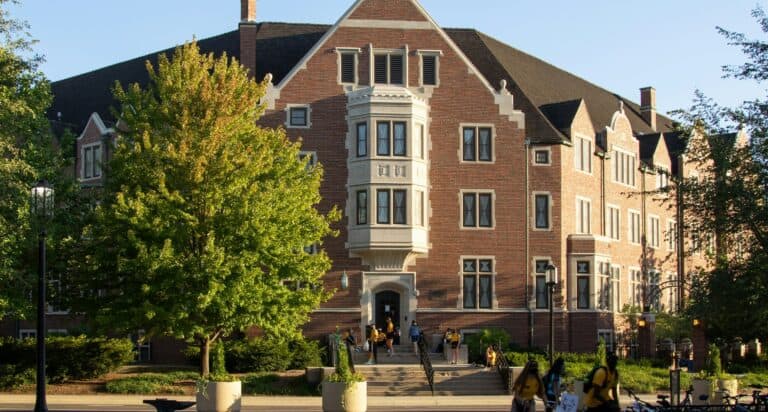
Student housing communities are exclusively designed for undergraduate or postgraduate students. People find them near college campuses. They follow structures, academic activities and rules such as quiet hours, prohibited items and guest policies.
The community spaces of student housing typically offer coworking areas, housing quarters, recreational rooms and more. It gives students the chance to meet new people and develop friendships, which is important when you live miles away from your family.
Community Care Apartments

According to Statista, Singapore is one of the fastest ageing societies in Asia, alongside Japan. One in five Singaporeans is 65 years or older, as reported by CNBC.
This encouraged the Housing Development Board (HDB) to offer senior-friendly housing with care services called community care apartments (CCAs). It’s a public housing project that gives senior citizens the chance to age safely and independently in a community-driven space.
The spaces they offer include a spacious, wheelchair-friendly front door that comes with a built-in bench beside the entrance. The bathrooms also feature slip-resistant flooring, grab bars and other senior-friendly fixtures.
Moreover, furnished communal spaces are located on every floor of the CCA block. This is where they can participate in activities, share meals and interact with others.
The Citylifer Community Living Design
The Citylifer aims to take the community living concept to new heights. This isn’t just about building densely packed housing units; it’s about making a tapestry of living experiences that adapt to everyone’s needs.
Through extensive research among their target group, The Citylifer’s community living design focused entirely on how it can help residents embrace living together tailored to the needs of young adults. Ultimately, they created three types of living spaces.
Three Types of Living Spaces
The Citylifer follows a multi-layer approach, dividing community living into three types of living spaces, including:
Apartment
At the heart of The Citylifer’s community living lies the private nest. This is where residents can recharge, put on a one-man show, do yoga and catch up on sleep.
They are meticulously designed to balance comfort and functionality, integrated with smart furniture for space optimisation. Outdoor balconies are also available depending on location, providing an additional room to breathe, relax and soak in natural light.
The Citylifer’s private apartments are designed for up to five people and come in different types:
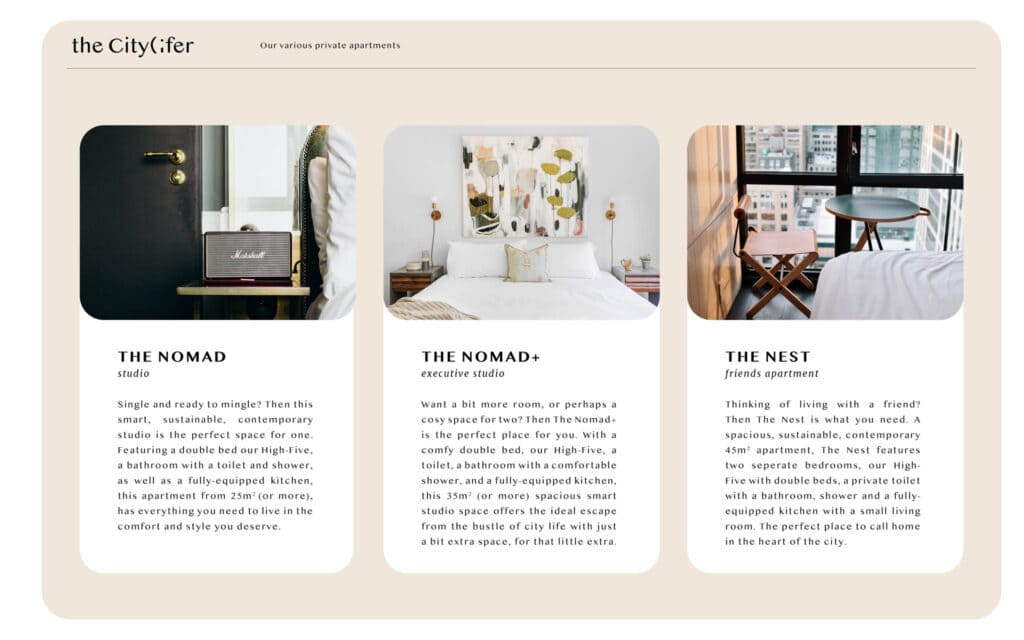
The Nomad
For those seeking a balance between socialising and prioritising their well-being, The Nomad apartment offers an ideal solution. This studio is smart, eco-friendly and contemporary. It has a double bed, a fully-equipped kitchen, and a bathroom with a toilet and shower. With a size of 25 to 35 square metres, The Nomad has all the essentials for a comfortable and stylish living experience.
The Nomad+
The Nomad+, ranging from 35 to 50 square metres, serves as an excellent choice for people seeking additional space or a cosy setting for two. It has a comfortable double bed, a toilet, a bathroom equipped with a bathtub and shower, and a fully furnished kitchen.
The Nest
Living with a friend is now possible, thanks to The Nest! A chic, eco-friendly apartment that has two cosy bedrooms with double beds, a spa-worthy bathroom with tub and shower and a fully-equipped kitchen. A small living room is also available—perfect for Friday movie nights.
House
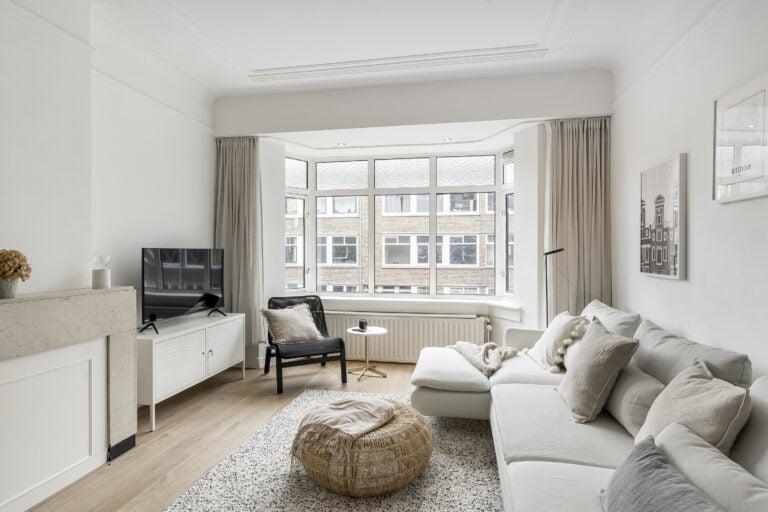
The Citylifer, above all else, aims to help people feel connected, fostering a strong sense of community. This is evident in their architectural design.
The house’s design focuses on embracing serendipity—happy or beneficial accidents that arise and develop by chance. Most importantly, it seeks to form close-knit community clusters, each accommodating up to 25 residents.
Building
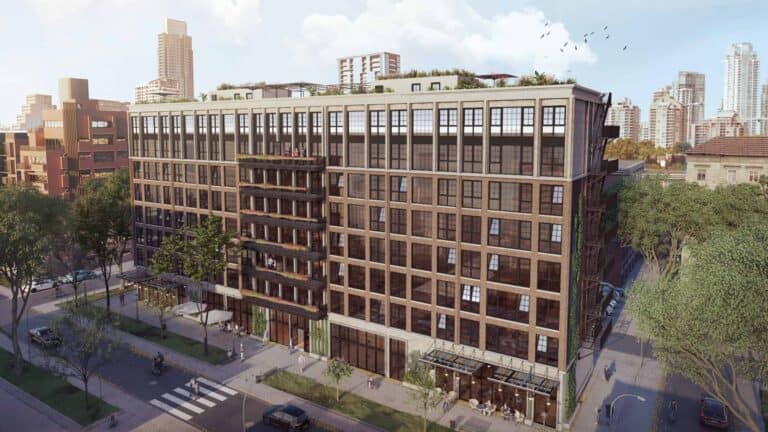
The Citylifer building is designed for unlimited residents, giving the perfect blend of expansive and intimate. Here, groups of 15 to 25 residents form community clusters on each floor, while sharing a spacious living room and kitchen perfectly designed to build strong bonds. These spaces just have that little extra residents might not experience in their private quarters, drawing them to the family room to spend quality time with fellow roommates. And since everyone gets their private apartment with amenities, privacy remains a priority.
They also feature strategically shared areas to foster a sense of community, like rooftops, game areas and co-working libraries are all within reach to meet friends, embrace experiences and learn something new.
In addition, the building features commercial public areas on the ground floor. It is a hub of activity to invite both residents and neighbours to meet and mingle, encouraging a strong sense of community involvement and social interactions.
The Number 25: Why Community Clusters Thrive
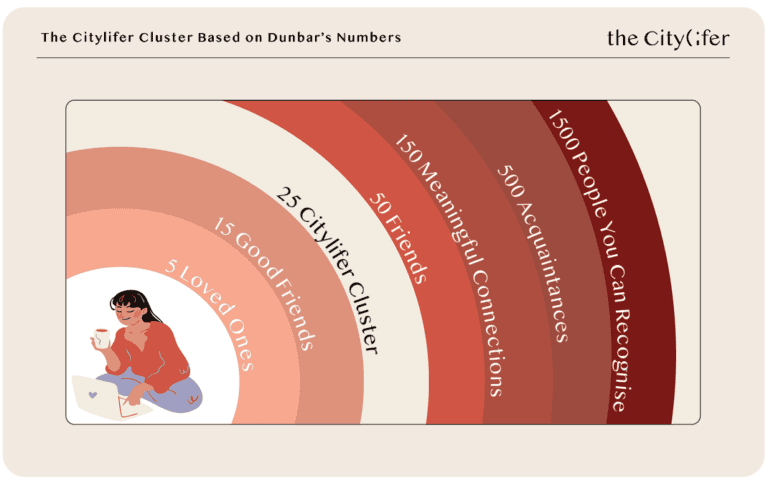
Learning about The Citylifer’s community living design presents an interesting question: why did they choose 25 for their community clusters? What makes this specific number such an ideal size for fostering a thriving community?
Designed for 15 to 25 people, these community clusters hit a sweet spot when it comes to community building. It’s not as intimidating as a massive community, yet large enough to offer a wide range of personalities, interests and ideologies. This size falls neatly in line with Dunbar’s number, a theory proposed by British anthropologist Robin Dunbar.
He suggests that humans can build stable relationships with roughly 150 people, and within this number, smaller clusters of 15 to 25 people seem to offer particular benefits for building genuine connections.
And while understanding every relationship may be challenging in this setup, making meaningful 1:1 relationships is still possible.
Sure, you may not know what’s going on between Wally and Alex, but you’re friends with both of them. Even if the specific dynamics aren’t always transparent, you’ve built a connection out of trust and acceptance, not by knowing every detail.
What makes this cluster size more ideal is it naturally provides coherency and spontaneous interaction. You don’t need formal management to make things happen because you just bump into people. It makes things a surprise, not a chore.
What the Future Holds for Community Living
There’s no denying that community living will certainly change the way we nurture communities in cities. This is especially important as we move towards a future where sustainability, connection and well-being are at the top of everyone’s lists.
There’s no doubt that community living will further undergo a transformational shift towards automation and wireless technology. This includes AI, blockchain and quantum computing to connect everything—from energy saving to access management and tenant control.
IoT integration in community living is also expected. With this technology, data-driven insights can help communities optimise resource usage, leading to more sustainable living spaces. This can also enhance smart surveillance systems, service requests and many more.
One thing’s for sure: the future of community living is set to change how urban spaces are managed and connected. With this, The Citylifer will pave the way for a simpler and more sustainable way of life, bringing together new tech to usher in a new era of urban living.
The Citylifer Perspective
The Citylifer has created exceptional innovative spaces in the best locations. These dynamic partnerships have given us the chance to reshape living spaces through community living: fulfilling, inclusive, sustainable.
Fostering Interactions While Preserving Privacy
The Citylifer’s overall design philosophy places a high value on promoting social interactions and protecting personal space. Residents get their own apartments where they can enjoy their privacy, complete with fully-equipped kitchens and comfy beds. With our High Five Furniture set, they can turn their studio into a multifunctional space to be used as an office, walk-in closet and more.
Although they are free to spend their day in their own private spaces, we also urge them to socialise and find connections with other Citylifers. Whether it’s playing board games with other residents in the family room or working together in the co-working library, there are a lot of opportunities to find a friend.
We understand the appeal of working remotely and just existing on your own, but thanks to Citylifer, it doesn’t have to feel lonely.
Community Above All Else
We prioritise building communities in our designs. We believe connecting with others is crucial for people’s happiness and for creating a friendly atmosphere in the building. That’s why we’ve placed three community layers to encourage this:
- Family Room: Residents in our buildings live in close-knit clusters of 15 to 25 people, sharing fully-equipped living rooms to forge connections.
- Shared spaces: Our shared spaces include game areas, garden rooftops and fitness centres—all exclusive for residents.
- Public areas: Located on the ground floor, public areas invite residents and neighbours to meet and mingle, promoting better community involvement.
FAQ
The benefits of community living include a sense of community, security, the potential for lower maintenance costs, social interaction and access to shared spaces.
Community living prioritises creating communities and supporting residents’ well-being. This is why the common areas and amenities are designed for socialising and community events.
Meanwhile, regular apartments focus primarily on providing roofs over people’s heads. They also have basic amenities like parking, gym and laundry facilities, but the sense of community is typically less emphasised.
Whether community living suits everyone is a complex question with no one-size-fits-all answer. This is because preferences in autonomy, privacy and lifestyle can vary from one person to another.





